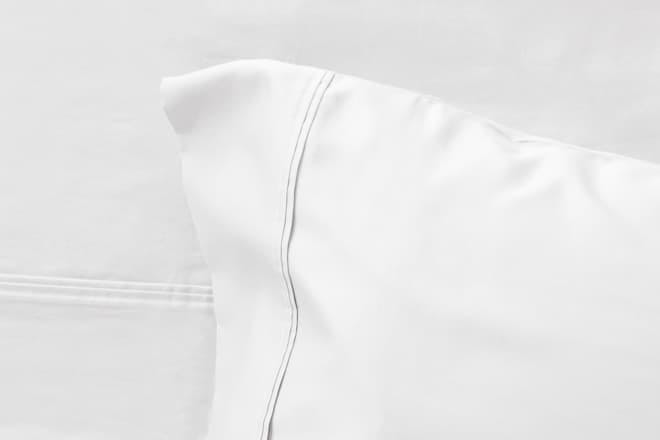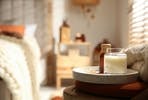Are you looking to upgrade your bedding, but not sure where to start? With so many options available, it can be overwhelming to choose the right one. In this blog, we'll be comparing two popular choices: down and down alternatives. We'll take a closer look at the pros and cons of each type of bedding, and provide you with all the information you need to make an informed decision.
Let's dive in!
What Is Down?
Down is a natural material found underneath the feathers of geese or ducks. It's a fluffy cluster that keeps birds warm in cold temperatures by trapping air and retaining heat. Due to its insulating properties and nice texture, down has been used for centuries to make bedding, clothing, and other textiles.
However, it's important to note that down products may require special care and maintenance, such as frequent fluffing and professional cleaning, to maintain their quality and lifespan.
If you're concerned about animal welfare, opt for ethically sourced down. Check for Responsible Down Standard (RDS) certification when shopping.
Benefits of down bedding
Down is a great insulator that provides significant warmth without bulk. It's breathable and conforms to the body for overall comfort. And while down is generally more expensive than other filling types, it has a long life.
High-quality down products are usually treated to remove allergens, which makes them a safe choice for people with allergies. However, dust mites and fungal spores can still grow in it. Allergy sufferers should avoid down or use a dust-proof pillowcase or duvet cover.
Who is down best for?
The fluffy and insulating nature of down makes it an excellent choice for those who live in colder climates or have trouble staying warm at night. Additionally, down bedding is often associated with high-end and luxurious bedding experiences, which can appeal to those who want to indulge in a plush sleeping experience.
What is Down Alternative?
Down alternative is a synthetic material made to mimic the softness and insulating properties of natural down. It's typically made from polyester fibers or other synthetic materials, and it's designed to provide a similar feel and warmth as down without the potential ethical or allergy concerns.

Benefits of down alternative bedding
Down alternative is often more affordable than natural down, and it can be a good option for those who prefer hypoallergenic bedding or who want to avoid animal products. It’s also easy to clean, offering a significant advantage over down.
Down alternative is available in different fills from lightweight to heavy, meaning you can choose bedding that's ideal for your climate and preferences. Many sleepers prefer to buy separate down alternative comforters and pillows for the spring/summer and fall/winter.
Who is down alternative best for?
Down alternative bedding is an ideal choice for those seeking a hypoallergenic and affordable bedding option that still provides warmth and comfort. It's easy to care for and can be machine washed and dried without special maintenance. Down alternative is a good option for individuals who have allergies to animal products or ethical concerns about the use of natural down.
How to Choose Between Down and Down Alternative
When choosing between down and down alternative bedding, there are several factors to consider. By weighing the pros and cons of each, you can ensure you're picking the right bedding for your unique needs and preferences.
Comfort
Down has long been considered a comfortable choice for pillows and bedding. It's breathable and lightweight while providing substantial warmth.
Down alternative offers a comfort level similar to traditional down, but it tends to be a denser filling material. This means that alternatives are heavier than feather down. Many sleepers prefer the slightly heavier weight because they find it comforting.
Allergen sensitivity
Down is a naturally derived animal product. High-quality down products are treated to be allergy-safe, but they can still attract dust mites that trigger allergy problems.
Down alternative is a synthetic, non-allergenic material. It's a safe option for people suffering from allergies.
Maintenance & care
Down is a natural material that generally cannot be cleaned in a washing machine at home. Down comforters and pillows need to be dry-cleaned and fluffed periodically. Using a duvet cover is a smart way to protect down bedding and minimize trips to the dry cleaner.
Down alternative can be washed and dried in your home. This provides significant cost savings over down bedding, as you do not need to take it to be professionally cleaned.
Durability
Down is known for its durability. Down comforters and pillows can stay in good shape for up to 15 years with appropriate care.
Down alternative bedding made from high-quality fibers, such as that used in Leesaproducts, can also offer an excellent lifespan. This is added to by the fact that it's easy to maintain, which means the longevity of your bedding will not be so heavily impacted by improper care.
Price
Down can be an investment. It's expensive because it takes a lot of work to source. Its long life also contributes to its higher price point.
Down alternative is significantly more affordable than traditional down. You don't have to invest in dry cleaning either. That makes down alternatives the clear winner when it comes to affordability and practicality.
Fill power
Fill power measures how much space an ounce of down occupies in cubic inches, indicating the fluffiness and insulation provided. Higher fill power leads to more warmth and comfort in bedding. Typically, high-quality down has a fill power of 600 to 800, with premium down products having 900 or higher.
Down alternative typically has a fill power ranging from 200 to 600. However, it's important to note that the fill power of down alternative is not always directly comparable to that of down, as its material is not as lofty.Other factors such as the quality of the materials and construction can play a larger role in determining the performance of down alternative bedding.
Get the Best Night’s Sleep with a Down Alternative
So which kind of bedding is right for you; down or down alternative?
While down can provide a luxurious sleeping experience, it may not be suitable for everyone due to ethical or allergy concerns. Down alternative bedding is a hypoallergenic and affordable choice that still provides warmth and comfort. It's also easy to care for and can be machine washed and dried without special maintenance. By choosing a high-quality down alternative product, you can enjoy the benefits of warmth and comfort without the potential ethical or allergy concerns associated with natural down.
FAQs
What is the difference between down and feathers?
Down is the proactive layer of feathers next to a bird's skin. Feathers are the bird's outer layer of protection and aren't as soft as down.
Is goose down better than duck down?
Goose down is generally softer and warmer than duck down. Goose down is also capable of a higher fill power than duck down.
How do you clean a down alternative comforter?
Down-alternative comforters can be washed and dried at home. Most comforters should be washed cold with a cold rinse on the regular cycle. Dry your comforter on medium heat or a permanent press. If you notice clumps forming in your comforter, toss a few clean tennis balls in the dryer before you start the cycle.
Do hotels use down or down alternatives for bedding?
Upscale hotels generally use down comforters because of their long lifespans. However, many hotels are now moving to down alternatives because they're easier to care for and can be cleaned more frequently than feather-down comforters.



